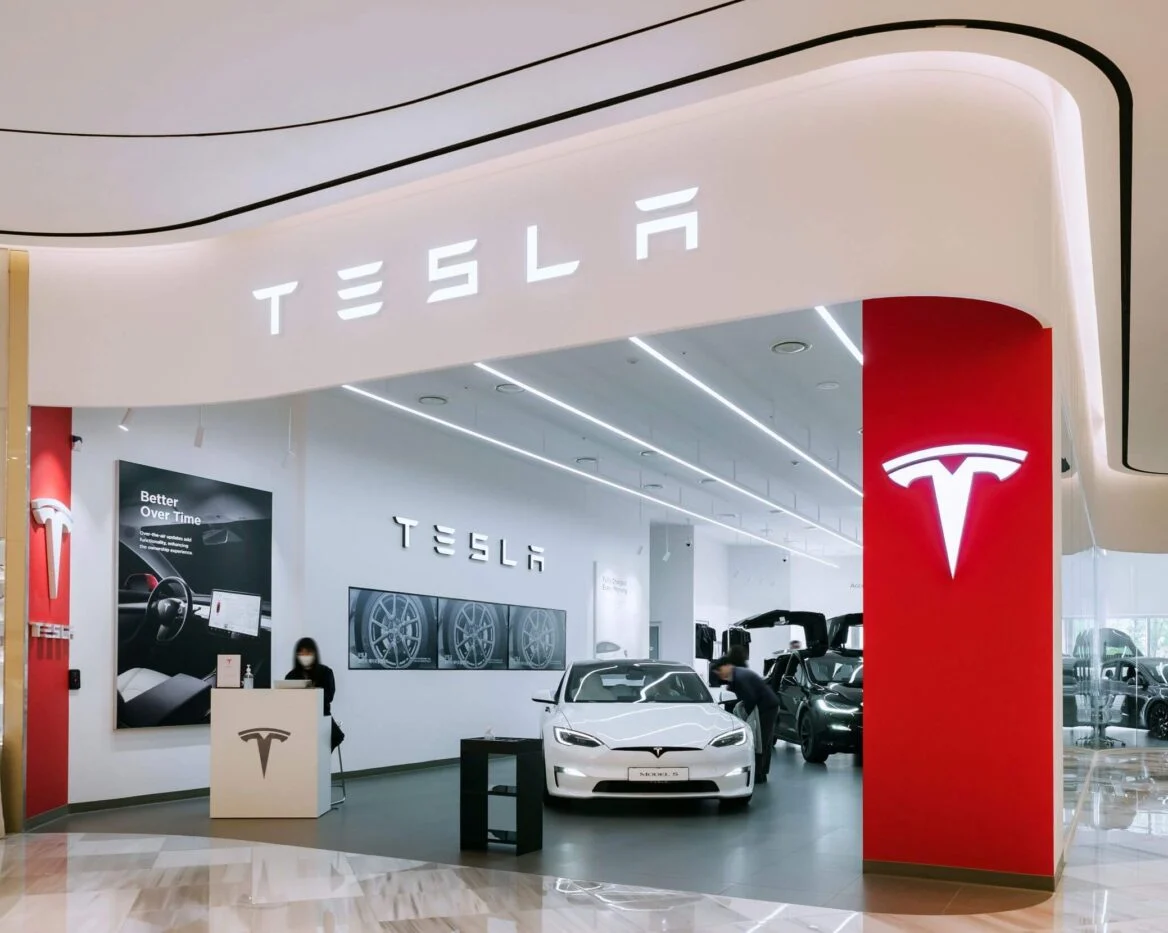TLDR
- Tesla (TSLA) stock dropped 3.4% to $433.71 after former Stellantis CEO Carl-Peter Forster warned the company may not survive the next 10 years.
- Chinese competitor BYD overtook Tesla in global EV sales, while Tesla’s China market share plunged from 16% in 2020 to 5% today.
- Tesla missed profit expectations for the fourth straight quarter despite record Q3 deliveries of 497,000 vehicles, with automotive revenue down 20% year-over-year.
- The company faces $400 million in new tariff costs and squeezed margins from aggressive price cuts on Model 3 and Model Y vehicles.
- Tesla’s board proposed a $1 trillion compensation package for Elon Musk requiring the company’s market cap to reach $8.5 trillion, with a shareholder vote scheduled for November 6.
Tesla stock closed at $433.71 on October 27, down 3.4% in the last 24 hours. The drop came after former Stellantis CEO Carl-Peter Forster issued a warning about the company’s long-term prospects.
Forster told French newspaper Les Echos that Tesla may not survive the next 10 years in its current form. He suggested Elon Musk could shift focus to other ventures like humanoid robots, SpaceX, or artificial intelligence.
The stock now sits about 11% below its 52-week high of $488. Despite the recent decline, shares remain more than 100% above 2024 lows.
Tesla reported $28 billion in revenue this week, up 12% year over year. The company delivered a record 497,000 vehicles in Q3.
However, the automaker missed profit expectations for the fourth consecutive quarter. Q1 2025 earnings showed a 71% drop in EPS and a 20% decline in automotive revenue year-over-year.
Chinese Competition Heats Up
BYD overtook Tesla in global EV sales earlier this year. Forster called the Chinese automaker more efficient and cost-effective than Tesla.
Tesla’s China market share has cratered. The company controlled 16% of the market in 2020 but now holds only about 5%.
Chinese competitors BYD, Nio, and XPeng have gained ground with cheaper models. Musk acknowledged last year that Chinese car companies are the most competitive in the world.
Tesla responded with price cuts and increased production at its Shanghai factory. China deliveries rose 33% year over year.
The price reductions helped boost sales volume. But they squeezed profit margins and put pressure on Tesla’s premium brand positioning.
Chinese automakers are expanding beyond their home market. BYD has entered European and Australian markets with competitively priced vehicles.
Tesla’s CFO revealed that tariffs on auto parts cost the company over $400 million. These costs stem from trade policies implemented during the Trump administration.
The company eliminated U.S. EV tax credits, removing a purchase incentive. To maintain sales growth, Tesla introduced cheaper Standard Range versions of the Model 3 and Model Y.
These new options undercut higher trims by up to $5,500. Supply chain issues continue to create headaches for the automaker.
Musk’s Compensation Package Vote
Tesla’s board proposed a 10-year compensation package for Musk worth about $1 trillion. The plan ties payout to growth targets requiring Tesla’s market cap to reach $8.5 trillion.
That represents a 500% increase from current valuation levels. Two proxy advisory firms recommended shareholders vote against the package.
The advisors questioned whether the board has too much discretion in deciding when Musk meets the goals. Board chair Robyn Denholm defended the proposal as necessary to keep Musk focused on Tesla.
A shareholder vote is scheduled for November 6. Musk dismissed Tavares’s prediction on X, stating the former CEO has no clue.
Technical indicators show overbought conditions on the daily chart. The Relative Strength Index hovers near elevated levels that may not be fully supported by fundamentals.
Key near-term support lies between $400 and $420. A breakdown below $400 would indicate weakening structure and open the door to deeper declines toward $360 to $380.
Resistance remains firm at $488, the 52-week high reached in early October. Volume divergence has become more apparent during Tesla’s recent upward move.
While price climbed steadily over recent weeks, trading volume declined. This pattern often precedes a reversal or consolidation period.
Short interest has ticked up modestly. A growing number of market participants are positioning for a correction.
Tesla trades at a P/E ratio over 260x, well above industry averages. Year to date, shares are up only 9%, making Tesla one of the weakest performers among major tech companies.






